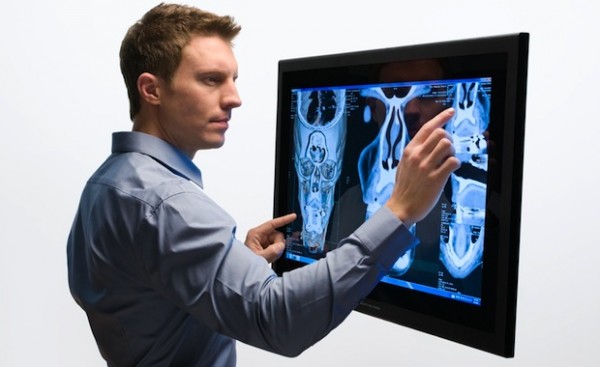Microsoft learns from Apple -- hardware creates innovation, software doesn't

Earlier this week, Microsoft bought Perceptive Pixel, a touchscreen development company. Many people see this as Microsoft's commitment to the Surface tablet, the Windows 8 operating system and idea that touchscreen technology will play a much bigger role in the near future.
Currently, Perceptive Pixel has three different models featuring 27-inch, 55-inch and 82-inch touchscreens, and while that certainly is a long way from the 7-inch Surface tablet, it could very well mean that part of the company's technology finds its way into a second-generation tablet or a refresh of the first. The acquisition could have an even larger effect than that. Big changes are afoot.
For a while now, Microsoft has struggled with public perceptions that it is not innovative enough. Sure, the company dominates the business software environment, but can’t overcome the image that it is not the cool company with new ideas. Here’s the perception colored with facts: Windows Phone 7 struggles to make a market dent. Internet Explorer, which used to dominate the browser market, loses usage share to Chrome and Firefox. So Microsoft hopes that Surface will change that perception.
One good hit has come from Steven Wozniak, yes, the co-founder of Apple, who raves about Surface. Indeed, in a blog at Huffington Post, his reaction to Surface is that "Steve Jobs was reincarnated at Microsoft", Woz likes what he sees.
Active Stylus Technology
One example of technology innovation is the active stylus technology. It provides the ability to create displays that are capable of simultaneously recognizing pen and finger input. Active stylus enables you to perform any number of operations such as sketch, design, draw, and mark up documents directly on the projected capacitive displays as easily as if you were using pen and paper.
Not only that, but the projected capacitive touchscreens can recognize points of contact and also recognize the point even when the nib is hovering up to half an inch above the display. For Windows this means that it can take advantage of distance, latitude/longitude, time/depth, x/y/z coordinates, and other information about the pen tip, before it has even touched the panel. All of this will provide a high degree of accuracy and control on the surface.
Surface and Partners
Microsoft's direction for Surface distinctly differs from the one it has used for other products. For one, they did the hardware design. Microsoft believes that the tablet is just another PC and that touchscreens on PCs will become standard: it’s just a matter of time. Using the Perceptive Pixel technology, they want to be at the forefront pushing hardware. Then they can push software. So by leveraging its own brand, design and limited, but growing, direct distribution, Surface shows that Windows is at home on a tablet.
This process is just the opposite of what Microsoft has pursued for the last 30 years. They've been a software company, leaving the hardware development to technology partners. But now it looks like they’re reversing that model, they want to be a hardware company and push the software as the second tier.
At the very least, they have tried to create a device that demonstrates what is possible, and that a touch-centric device like Surface needs an operating system that is optimized for touch.
Why?
Apparently, Microsoft has learned one important lesson from Apple -- that hardware creates innovation, software doesn't. Software conforms to the limitations and specifications of hardware. So if you want to be innovative, start with hardware.
Where this will put the Microsoft hardware partners is not clear. One possible result is that more technology partners will turn to Linux as the host operating system since they will not be tied down to Microsoft. You can imagine the conversation: "Fellas, if you design and build computers, then we will not follow your marching orders, we will look elsewhere".
More likely however is that hardware partners will learn to adopt and improve on the designs that Microsoft is putting out to push their products out in the market. And who would not want that?
